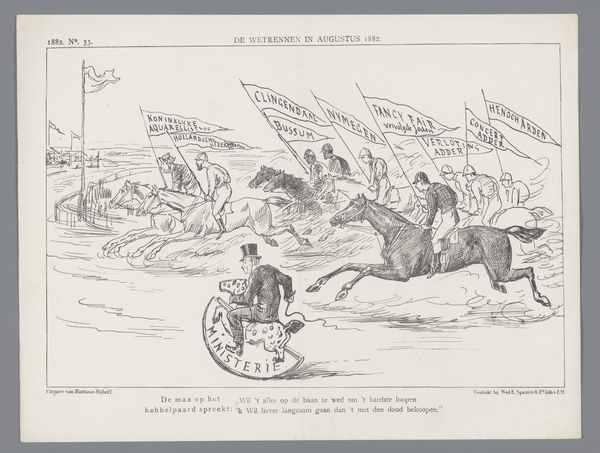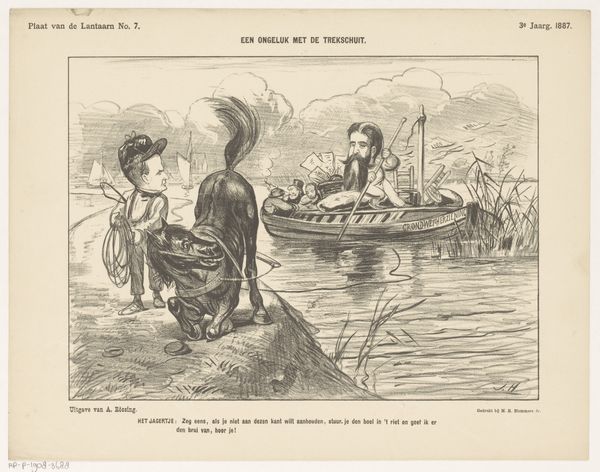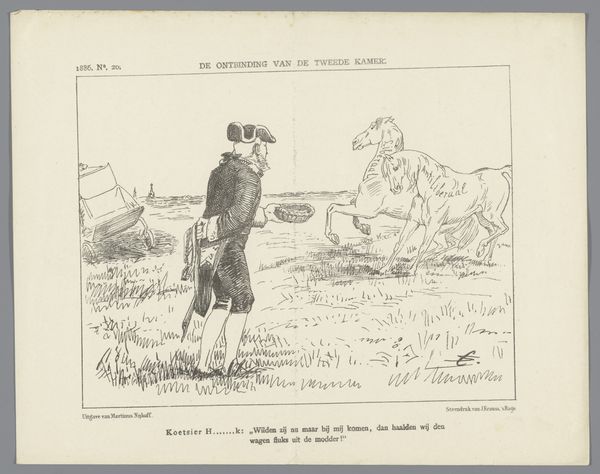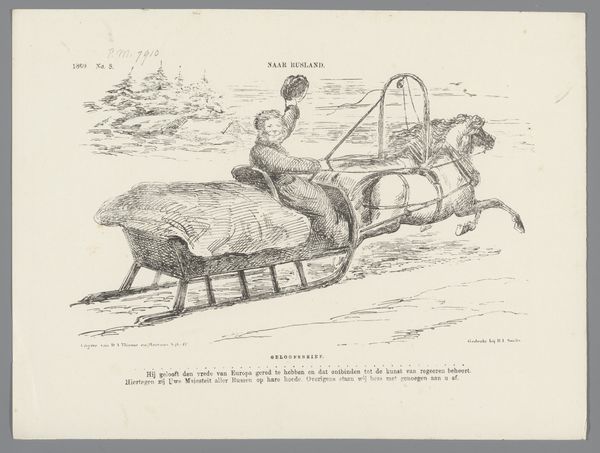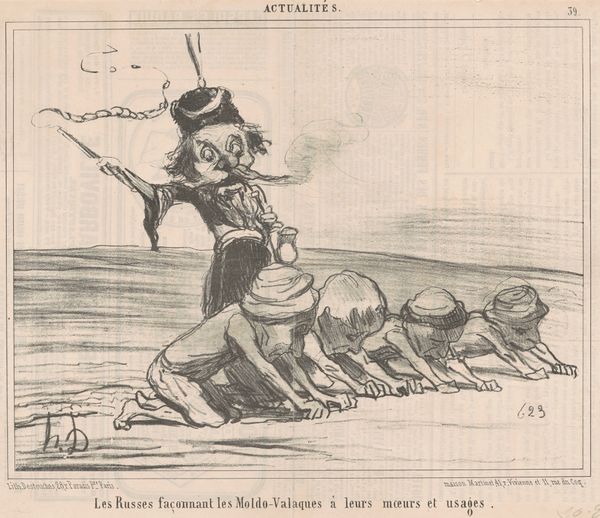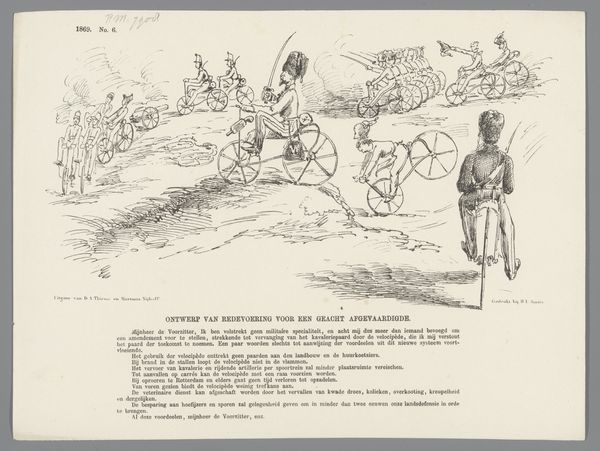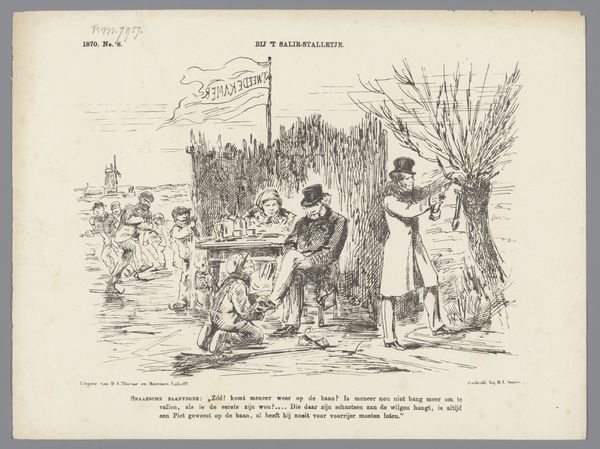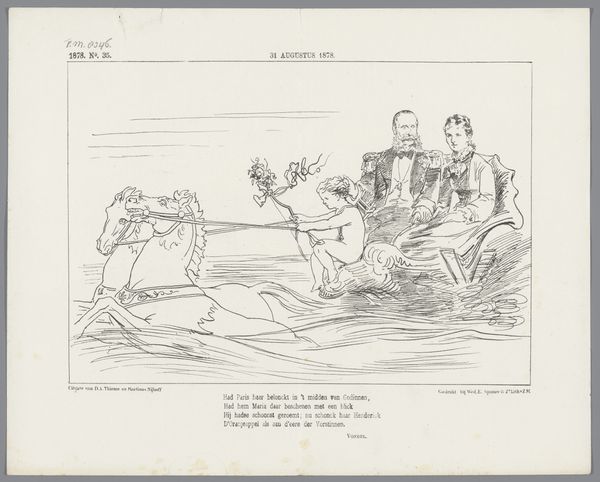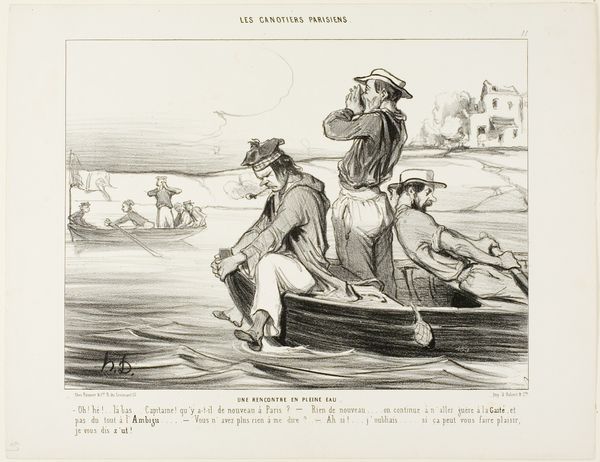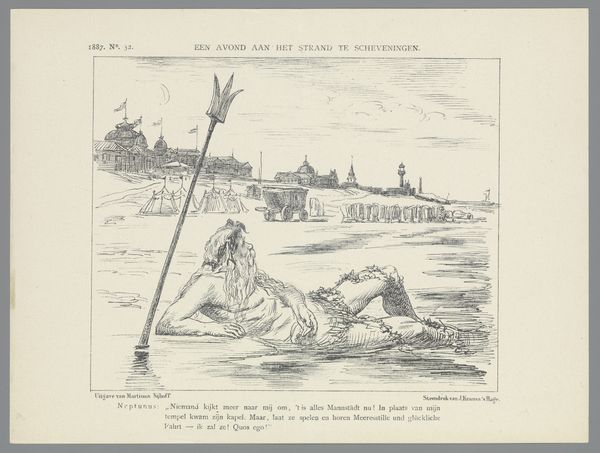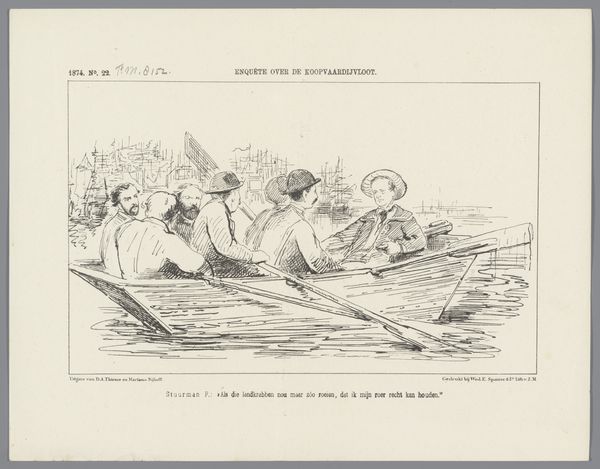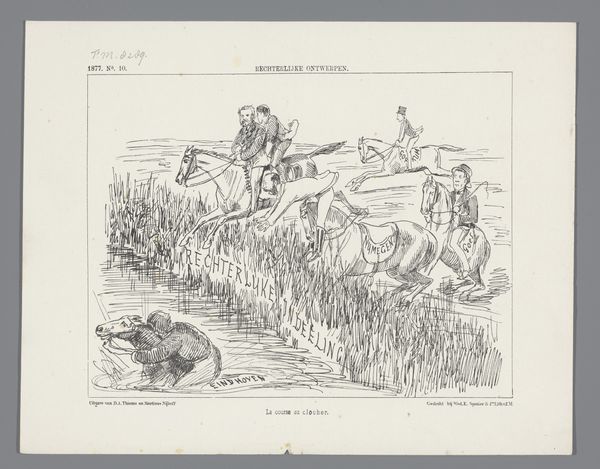
Dimensions: height 260 mm, width 335 mm
Copyright: Rijks Museum: Open Domain
Editor: This print, "Spotprent met jager te paard met trekschuit" from 1887 by Jan Holswilder, is an ink drawing with a real humorous energy to it. The figures are exaggerated, almost grotesque, and the landscape has this frantic feel to it. What grabs you when you look at it? Curator: The fascinating thing for me lies in its material production and the social commentary it embodies. Prints like these were often mass-produced. So how does the act of replicating this image through printing influence our perception of its message? This wouldn't have been a singular, precious object, but something intended for wide distribution, right? Editor: Exactly. So you're saying that knowing it was a print meant to be circulated influences how we view its meaning? Curator: Precisely. Consider the socio-political climate in 1887. What materials were readily available, and what printing processes were used? Were they advanced or relatively primitive? What kind of labour was involved, and how would that affect its social impact and readership? It's not just about who the cartoon targets, but who *had access* to be in on the joke! Editor: Ah, I see. The materials themselves connect to a larger cultural context and power structures. Curator: And what are the implications of representing such a social and political context via caricature and the artistic traditions that enabled this medium of mass satire. In looking closer at this print, it reveals a whole network of social and material relations that go beyond just surface level aesthetic pleasure. Editor: That’s fascinating, seeing how a common image can speak to a complex history of production. Curator: Exactly! It invites a deeper conversation about labour, materiality, and consumption within the artwork's context.
Comments
No comments
Be the first to comment and join the conversation on the ultimate creative platform.
